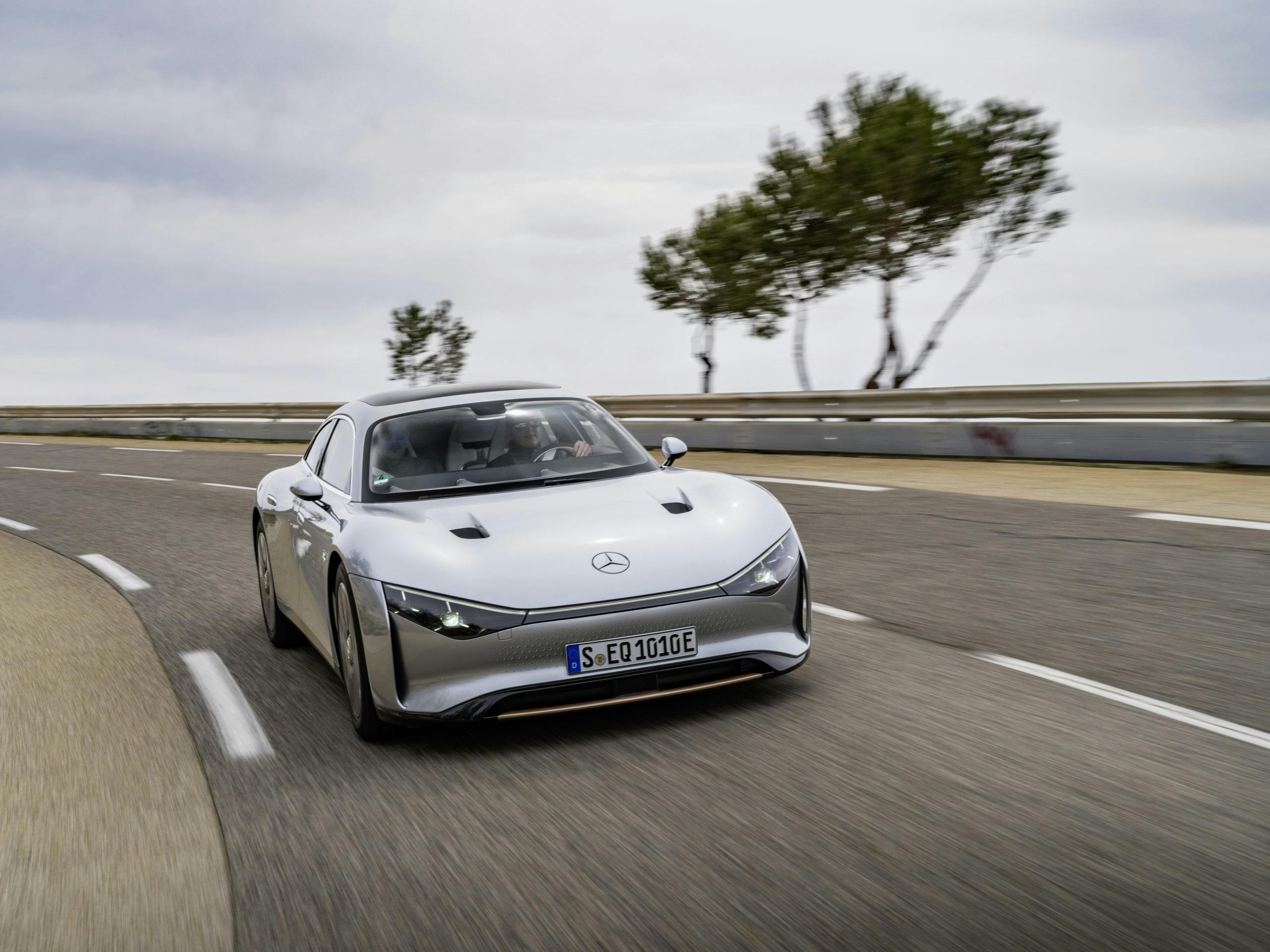When it debuted back in January, the Mercedes-Benz EQXX vaunted its efficiency and ability to drive far. With a range of over 1,000 km or 621 miles per charge, this battery-electric vehicle has the capability to go the distance efficiently. Its battery capacity is less than 100 kWh yet its density manages to be on par with the unit on the EQS sedan while being 30% lighter, making it viable for compact car applications. The car also has a lot of efficiency-improving tricks like a heat pump and a 117-cell solar panel that reduces the drain on the main battery.
To put its money where its mouth is Mercedes-Benz took its prototype on a long road trip from its headquarters in Sindelfingen, Germany all the way to Cassis in the Côte d’Azur (French Riviera) on the Mediterranean coast of France and Monaco. The journey took the Mercedes-Benz Vision EQXX through the Swiss Alps and Northern Italy, meaning it had to deal with different weather conditions and altitude changes. Before entering Italy, the car was driven at high speeds through the German Autobahn where it cruised at 140 km/h or 87 mph for prolonged periods.
By the end, the Vision EQXX had traveled 1,008 km or 626 miles in 12 hours and 2 minutes. Its average energy consumption was 8.7 kWh per 100 km, which translates to an impressive 7.1 miles per kWh. At the end of the trip, the battery still had a 15% state of charge, meaning the car can travel another 140 km or 87 miles before it completely tapped out.
Mercedes achieved this thanks to the focus on optimizing efficiency. The Vision EQXX has a 0.17 drag coefficient, enabling it to easily slip through the air even at high speeds. This is achieved thanks to the car’s small frontal area, an active rear diffuser, the rear wheels rolling in the slipstream of the front, and the use of low-rolling-resistance tires. At 3,869 pounds, the Vision EQXX is lighter than most battery-electric vehicles on sale today, meaning it used less energy during uphill sections like the Gotthard Tunnel on the leg going into Italy. Once on the other side, the car simply regenerates energy going downhill, preserving the mechanical brakes while replenishing its energy reserves.
The solar roof contributes to the Vision EQXX’s efficiency by powering things like the infotainment system. As a result, the car’s main drive battery can focus more on turning the wheels. Mercedes says this boosted the range by 2%, which is an additional 25 km or 15.5 miles on a journey of over 1,000 km or 621 miles. Throughout the trip, the 241-hp electric motor didn’t need to work that hard thanks to the car’s low aerodynamic and rolling resistance. Like the battery, the entire drive unit is highly efficient thanks to its compact design. Mercedes says that its average efficiency is 95%, meaning all of that energy from the battery ends up motivating the vehicle. Versus other electric drive units, the example in the Vision EQXX has 44% lower drivetrain losses, improving range by another 2%.
Little heat is generated by the electric drivetrain because of its high levels of efficiency. That means the Vision EQXX only needed passive cooling throughout the trip. The underbody cooling plate uses airflow to maintain even cooling. It also increases the range by 20 km or 12 miles and ensures the car’s drag coefficient remains low. Further helping improve efficiency are guides that actively help you drive more efficiently. The efficiency assistant provides data on energy flow, battery status, topography, and the direction of the sun and wind, all of which are geared to help the driver.
By the end of the trip, the Mercedes-Benz Vision EQXX has proven it can travel great distances in the real world. The automaker notes this is just the beginning as it continues to find ways to improve efficiency and range for its upcoming lineup of fully electric vehicles.

